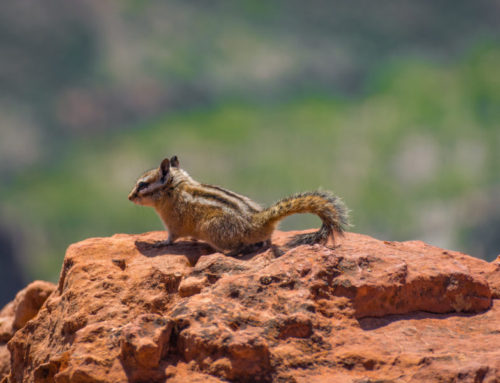In this article, we provide the 20 most common bugs in Utah and where you can find them.
Have you ever wondered what types of bugs are most common in Utah? And, which ones are likely to sneak into your home?
The state of Utah is 84,899 mi² in size, yet there is not a single spot without bugs. Utah is known for its vast landscapes and diverse terrain. That being said, it seems that bugs from all walks of life gather here.
Read on, we’ve also included tips on how to prevent or control a bug infestation.
Elm Seed Bug
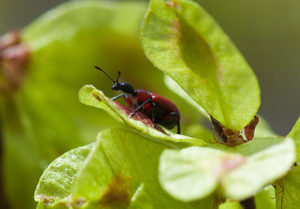
Fairly new to Utah, the Elm Seed Bug carries a major home infestation risk. These small bugs are brown and black in color, and gather in or around houses. While Elm seed bugs mostly eat elm seeds, they will also harvest on other trees. Similar to , the Elm Seed Bug is more of a nuisance pest. That being said, these bugs do release a pungent smell that can become unbearable.
Crane Fly
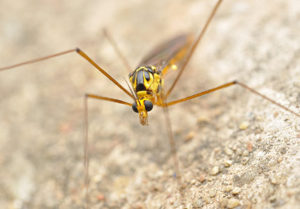
The Crane Fly is considered a member of the insect family. Crane flies look similar to mosquitoes, except larger in size. Unlike mosquitoes, these flies do not bite people or animals. They feast off of nectar from flowers and other plants. There are about 15,000 different species of Crane Fly in the world. Some of those adult species do not eat at all.
Millipede and Centipede
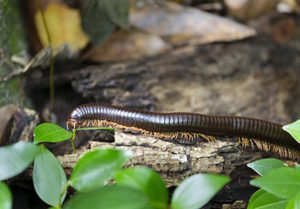
Millipedes range in length, as do centipedes. However, the millipede is typically shorter in length and wider in girth. The Millipede has a rounded body, and differ in color from dark brown to gray. While centipedes tend to have a flatter torso and a yellowish to brown colored exterior. Both millipedes and centipedes have the potential to become household pests, you are more likely to find centipedes in your Utah home. They prefer areas of high moisture, like dark basements or washrooms.
Blister Beetle
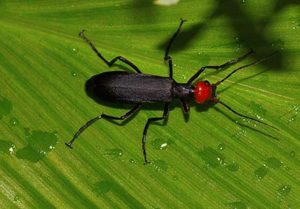
Blister Beetles are typically black in color, and have a shiny shell on their heads. This bug has a little bit of yellow hidden on its chest. Yellow is the only other color the blister beetle has. This beetle gets its name from the chemical they spray on human skin, which creates redness, irritation and blisters. They use this as a defense mechanism against their predators. The blister beetle can be found on flowers, especially goldenrods and asters.
Earwig
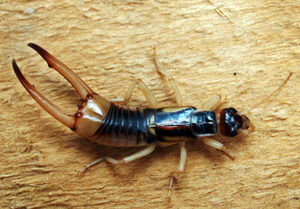
Earwigs are elongated, with a flattened body shape. These bugs are typically dark brown in color. The length of an earwig can range from 10-14 mm long, with some species reaching 80 mm. This bug is equipped with specially designed mouthparts for chewing. The Earwig is a relative of the cockroach, and is a nasty pest to get rid of. This insect will usually find its way into a home or structure during the summer, when they are looking for shelter from the heat. Earwigs eat house plants, fruits and vegetables.
Boxelder Bugs
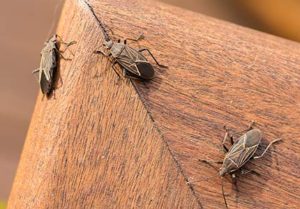
Boxelder bugs are considered more of a nuisance pest, as they can reproduce quickly but do not cause any structural damage. These bugs are also not considered to be a health hazard to humans. Boxelder bugs feed on fluids by piercing an object and sucking the contents out. Some food sources for these bugs include seeds, foliage, fruit or twigs. Boxelder bugs have a preference for dry, sheltered areas. They are often found nesting along the foundation of homes, window panes, under leaves or other debris, bushes, in a ditch or similar locations. During the winter, Boxelders will stay in hiding to avoid the cold temperatures. In Spring, Summer and Fall seasons, they come out from hibernation to feed and breed. Since baby boxelder bugs prefer warm surfaces, you are likely to find a colony of them where it is hot and dry.
Mormon Crickets
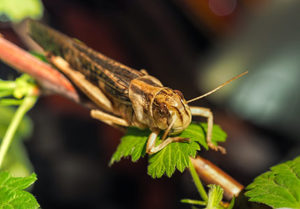
The Mormon Cricket is a fairly large insect, with the ability to grow to almost 3 inches (8 cm) in length. Some characteristics of this bug include a “shield” behind its head, colors include black, brown, red, purple or green. Their abdomen may have stripes across it. The Mormon Cricket eats plants, shrubbery and sagebrush. These crickets can be found in areas of high heat, and low occupancy. They are often found in homes which are more secluded, when compared to homes in the city.
Cockroaches
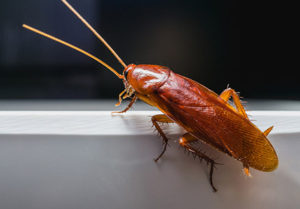
Many people wonder whether live here in Utah. We’re here to tell you that yes, they do. There are four types of cockroaches that are considered pests in the state of Utah. The American Cockroach, German Cockroach, Oriental Cockroach, and the Brown-banded Cockroach. These types of cockroaches are deemed harmful due to their dirty living habits and excessive reproduction capabilities. Cockroaches are generally between ½ an inch to 2 inches in length, and have 6 legs in total. Some species may also have wings and the ability to fly. Their body structure is flat and oval, and their skin feels oily to the touch. Cockroaches have specialized padding on their feet which gives them the ability to climb on walls and even ceilings. Because of this characteristic, this insect can be found anywhere inside the home.
Grass Spider
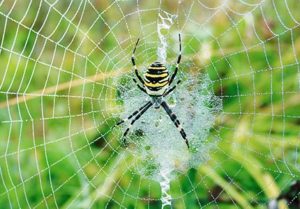
The Grass Spider belongs to a family of Funnel Web Weavers. Known for their specialized web weaving, by creating a tunnel with a small opening where they will nest. They have large spinners on the top of the abdomen which they use to spin these webs. The Grass Spider will weave its web in grassy areas, along buildings or at the bottom of fences. This spider is just one of many spiders located in Utah.
Praying Mantis
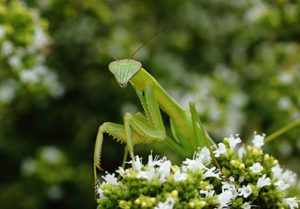
The Praying Mantis gets its name from having very long front legs that they hold in a particular position, which reminds people of praying. They are typically green in color, and range from ½ an inch to 2 inches tall. This insect can be found in many different habitats. That being said, they do prefer warmer areas and are often found in desert states.
Pseudoscorpion
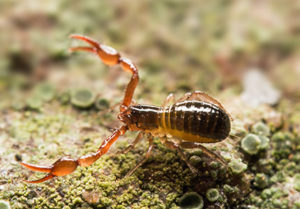
The Pseudoscorpion belongs to the arachnida class. They are small in stature with a flat, pear-shaped body. Generally speaking, this bug will range from 2 to 8 millimeters in length. They vary in color, and can be anywhere from yellow-tan to dark brown. The Pseudoscorpion gets its name from the pincers that resemble those on scorpions. Pseudoscorpion were first discovered in a library, feeding on booklice. That being said, this bug is often found in homes where books or paperwork is lying around.
Carpet Beetles
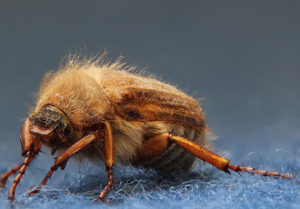
Carpet Beetles have been officially classified as one of the most common indoor pests in Utah. They get their name from harvesting on the wool or fur that carpets were once typically made of. Carpet beetles, or larvae, eat a consistent diet of leftover food, other dead insects, dead animals, rodent bait traps, shedded hair, leather, fur, feathers, occasionally cotton or linen and will even feast on your child’s food-based art project. Normally, these bugs live outside. That being said, carpet beetles will migrate into the home during warmer months to protect themselves from the extra heat.
Kissing Bug
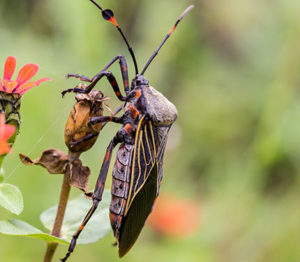
Kissing Bug is the nickname granted to the insects that spread Chagas disease. This stems from when these bugs bite humans around their lips and face while they are sleeping. After they bite, they will defecate into the wound and their feces carry an infectious parasite, known as Trypanasoma cruzi. Kissing bugs are typically dark in color with black, elongated necks. Some species may have yellow, red or orange striped bands around their torso. The head is shaped like a traffic cone. These bugs have been linked to bug infestations in dog beds, as well as human beds.
Robber Fly
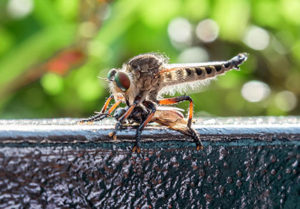
Robber Flies have a specific divot on top of their head, which you can locate between their prominent eyes. Generally speaking, adults have a long body with a narrow abdomen. However, some species are short and fuzzy, similar to a bumble bee. The Robber Fly varies in size from 3 mm to upwards of 50 mm. Most of these flies are brown, gray or black in color. You are most likely to find this type of fly in sunny, bone-dry habitats.
Common Thread-Waisted Wasp
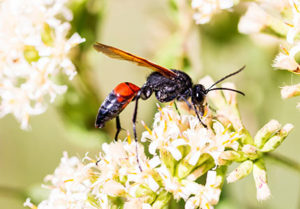
The Thread-Waisted Wasp gets its name from its incredibly narrow ‘waist’. The wasp is shiny black in color, accompanied by a prominent abdomen with a thin orange or red band. This bug has thin, long legs that give it the ability to attach itself on to trees and other surfaces. These characteristics aid the wasp while hunting for prey such as caterpillars, small insects and flower nectar. The wasp will burrow in loose dirt piles by creating tunnels throughout the pile. Watch out, the Thread-Waisted Wasp delivers a painful, venomous sting.
Rocky Mountain Wood Tick
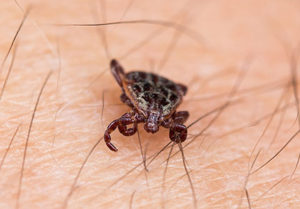
Rocky Mountain wood ticks (AKA simply the ‘wood tick’), gets its unique name due to the fact that the majority of this species live in the Rocky Mountain states. There is a good chance you will encounter this tick in its habitat of choice, wooded areas. Be careful, this insect carries a virus known as Rocky Mountain spotted fever. The mortality rate for this infectious disease is 20 percent. The wood tick needs to be attached to the skin for at least 2 hours in order to transmit the disease. That said, early detection is key in order to avoid an infection.



